Published in Great Britain in 2012 by
Tattered Flag Press
PO Box 2240
Pulborough
West Sussex RH20 9AL
England
www.thetatteredflag.com
Tattered Flag Press is an imprint of Chevron Publishing Ltd
Spacesuit
Brett Gooden 2012
All rights reserved. No part of this book may be reproduced,
stored in a retrieval system, transmitted in any form or by any
means, electronic, or mechanical including by photocopying
or scanning, or be held on the internet or elsewhere, or
recorded or otherwise, without the written permission of the
publisher.
Jacket Design: Tim Brown/Mark Nelson
Illustration Tim Brown 2012
British Library Cataloguing in Publication Data
A Catalogue Record for this book is available from the
British Library
ISBN 978-0-9543115-4-4
EPUB ISBN: 978-0-9576892-0-6
Design by Mark Nelson, Sydney, Australia
Printed and bound in China
Copyright
Illegal copying and selling of publications deprives authors,
publishers and booksellers of income, without which there
would be no investment in new books. Unauthorised
versions of publications are also likely to be inferior in quality
and contain incorrect information. You can help by reporting
copyright infringements and acts of piracy to the Publisher or
the UK Copyright Service.
For more information on books published by Tattered Flag
Press visit: www.thetatteredflag.com
This book is produced using paper that is made from wood
grown in managed, sustainable forests. It is natural, renewable
and recyclable. The logging and manufacturing processes
conform to the environmental regulations of the country of
origin.
 Photograph by Michal Kluvanek
Photograph by Michal Kluvanek
The Author
From the age of eight, when he insisted that his mother take him to see the seminal science fiction film Destination Moon, Brett Gooden has had a fascination for the fact and fiction of human space flight. In 1961 he joined the British Interplanetary Society (UK) and was elected a Fellow of the Society in 1973. In 1967 he became a member of the Space Medicine Branch of the Aerospace Medical Association (USA). He obtained his MB, BS (1967) and MD (1972) degrees from the University of Adelaide, and PhD (1978) from the University of Nottingham (UK). He was elected to membership of Sigma Xi, the Scientific Research Society (USA) in 1973 and the Physiological Society (UK) in 1975. His scientific research in Australia, USA and UK has dealt largely with aerospace and diving medicine. He authored one of the earliest reviews of the physiological responses of man in orbit in Spaceflight in 1964. His books include Diving and Asphyxia: A Comparative Study of Animals and Man (Cambridge University Press, 1983, reprinted 2009), Spaceport Australia (Kangaroo Press, 1990), Echidna: Extraordinary Egg-laying Mammal (CSIRO Publishing, 2006) and Projekt Natter: Last of the Wonder Weapons. The Luftwaffes Vertical Take-Off Rocket Interceptor (Ian Allan Publishing Limited, 2006).
Acknowledgements
I wish to express my sincere gratitude to Dr. Robert Palmer, aerospace engineer, retired, formerly of The Aerospace Corporation, for his tireless support with the technical aspects of this book. Despite my plethora of questions on a multitude of subjects over many years, he remained steadfast in his desire to assist me. I hasten to add that any inadequacy that the reader may find with scientific topics in this book remains entirely my responsibility.
I thank my family for their support.
I am very much in debt to Robert Forsyth of Tattered Flag Press and Chevron Publishing and Mark Nelson for their unwavering assistance in making this book possible. An author could not ask for a more dedicated editor and creative team. I would also like to thank Tim Brown for his work on the graphics in this book.
Brett Gooden, MD, PhD, FBIS
Adelaide, South Australia
December 2012
Photograph and illustration credits
Individual credits appear with the relevant photographs and illustrations within the body of this work. Every effort has been made to trace the present copyright holders of photographic and illustrative material contained in this book. Our sincere apology is made for any unintentional omission which we would be pleased to correct in any future edition of this book.
Text reference numbers
As you read this book you will note that small numbers appear from time to time in the text in brackets. These numbers are the key to discovering the source of the information just discussed and sometimes to more detailed information on the subject. You will find these numbers listed at the back of the book under Chapter Notes. Look for the chapter concerned and you will find the reference numbers listed in numerical order that show the reference source. Enjoy your research.
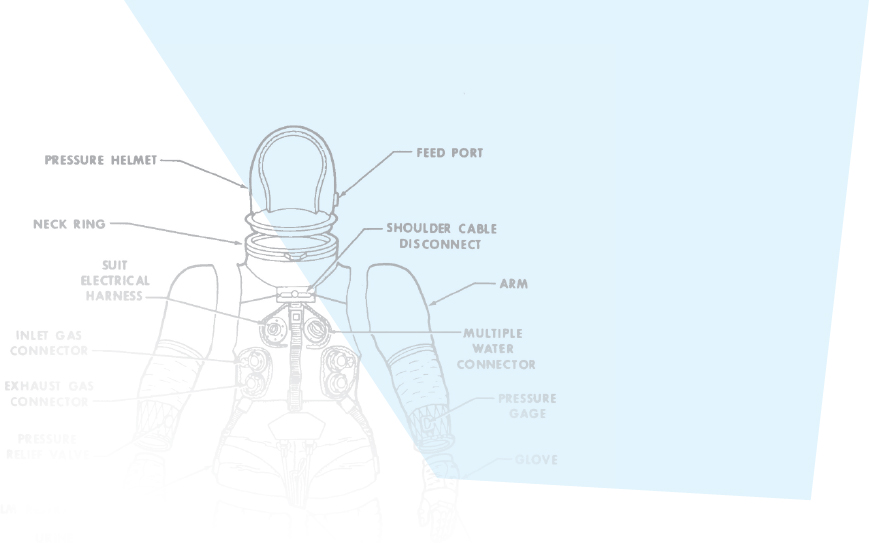
Contents
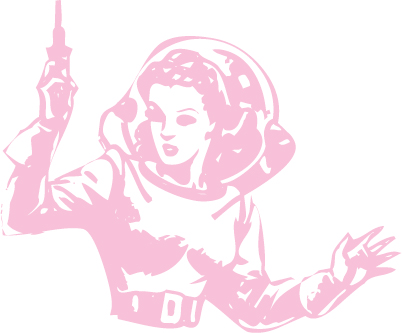
I N T R O D U C T I O N
ICON OF SPACE FLIGHT
T HE spacesuit is an icon of space flight. It is the very symbol of interplanetary exploration of pioneering adventure, of excitement and danger, and of mans quest to learn more of other worlds.
Spacesuit. What images does this word conjure in our imagination? We might visualise dramatic scenes of astronauts working on giant satellites or kicking up moon dust on the lunar surface. Or perhaps we might recall with nostalgia space heroes in science fiction films and magazines, like Dan Dare and his Space Fleet colleagues floating between their bullet-shaped spaceships. The spacesuits worn by astronauts today are a major technological milestone on a long and tortuous path that began in the 1930s with primitive garments developed for high-altitude record attempts by daring young aviators.
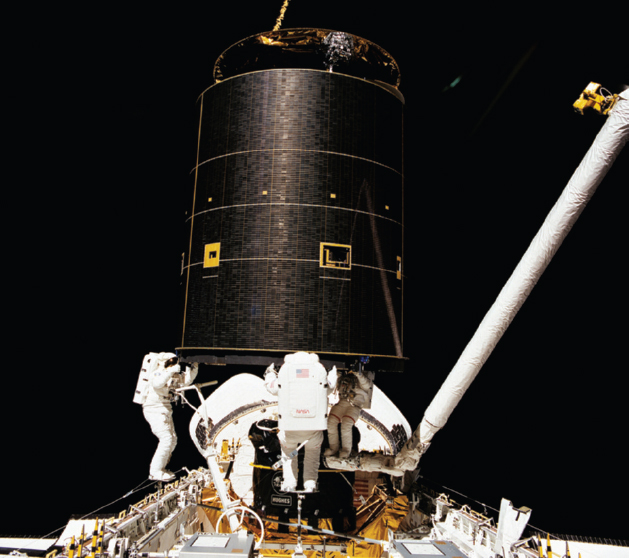
Three US astronauts working together on the huge satellite, Intelsat VI, in the payload bay of the Space Shuttle Endeavour in May 1992. Each astronaut is suited in an extravehicular mobility unit spacesuit. It took around 50 years of intensive development to reach this degree of sophistication in pressure suits. (NASA)
During the first half of the 20th century the spacesuit was generally believed to be a dream, a fantasy of science fiction. In cold, practical terms it seemed impossible that it could ever become a reality. This was an era when science fiction and special effects artists could allow their imaginations to run riot on the covers of science fiction books, in magazines and films. This period fostered an exciting interaction between science fiction and science fact. Then, in the 1950s, came the Space Race and with it serious but incredibly ambitious plans to finally land a man on the Moon. The unbelievable dream might come true. Enormous pressure was placed on engineers and aviation physicians to produce real spacesuits that could be worn not only in space, but also on the lunar surface.
This book follows the remarkable history of the spacesuit through science fiction and fact. With an absorbing blend of clarity and detail, it explains how this seemingly impossible dream gradually evolved into the complex suits of today and how the quest continues for the Mars and Beyond suits of tomorrow.
Next page




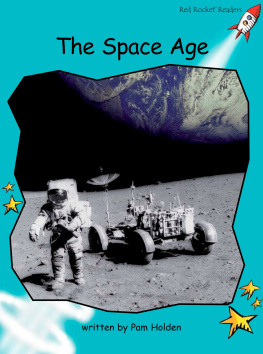

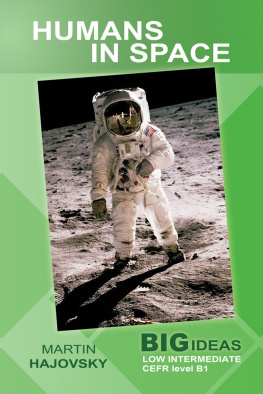


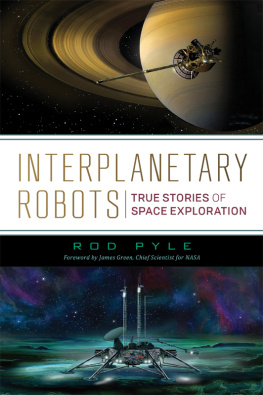
 Photograph by Michal Kluvanek
Photograph by Michal Kluvanek

